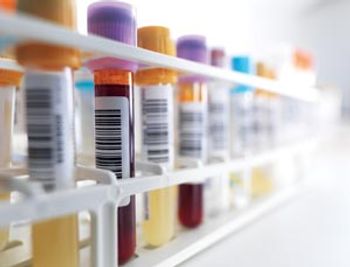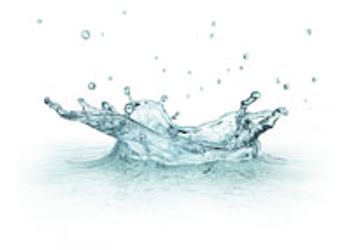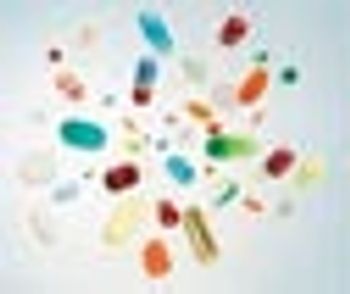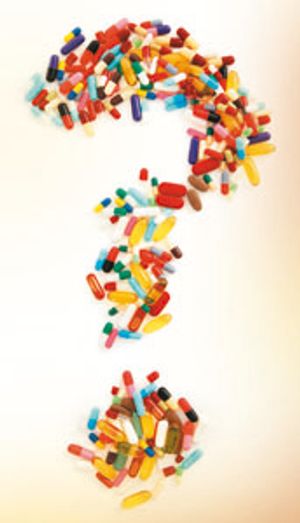
Extracts of wild blueberries (Vaccinium angustifolium Ait.) contain bioactive molecules that could be used in the development of new therapeutic treatments for the dental disease periodontitis.
LCGC Associate Editor

Extracts of wild blueberries (Vaccinium angustifolium Ait.) contain bioactive molecules that could be used in the development of new therapeutic treatments for the dental disease periodontitis.

Microbial life is possible within the Earth’s mantle, according to new research. High performance liquid chromatography–mass spectrometry (HPLC–MS) analysis of rock cores sampled from the Iberian plate margin (off the coast of Spain and Portugal) revealed the presence of lipid biomarkers indicative of microbial communities present beneath the seafloor more than 100 million years ago.

Researchers have published a new approach to heparin screening that allows the detection of adulteration within one hour. Published in the journal Analytical Chemistry, the study presents a screening strategy using hydrogen peroxide digestion followed by fast reversed-phase ion pairing liquid chromatography (reversed-phase IP–LC) coupled with tandem mass spectrometry (MS–MS) to detect contamination of heparin samples.

Researchers from Kaohsiung Medical University in Taiwan have been investigating melamine and have shown that melamine tableware is a potential source of melamine exposure and that workers in a melamine tableware factory are subsequently at a higher risk of renal injury associated with ambient melamine exposure.

Laser irradiation of blue tattoo ink can create toxic byproducts - including hydrogen cyanide (HCN) - according to new research published by scientists at the German Federal Institute for Risk Assessment. Pyrolysis gas chromatography–mass spectrometry (Py–GC–MS) was performed on samples of copper phthalocyanine blue to predict the decomposition products resulting from irradiation, as part of a wider on-going project assessing the safety of tattoo inks.

Researchers revisit arteriovenous profiling - comparing changes in the metabolome of arterial versus venous blood in the diagnosis of disease - using targeted and untargeted LC–MS methods.

Persistent organic pollutants (POPs) pose an on-going threat to human health, but are often trapped within environmental samples, thereby making analysis challenging. Bethany Degg of The Column spoke to Lourdes Ramos from the Department of Instrumental Analysis and Environmental Chemistry Institute of Organic Chemistry of the CSIC (Madrid, Spain) about her innovative research on new sample preparation methods for POPs.

Researchers at the University of Waterloo in Canada are collaborating with clinicians at Toronto General Hospital to develop preclinical and clinical applications of solid-phase microextraction (SPME). Bethany Degg of The Column spoke to Barbara Bojko from the team to find out more.

As part of a wider project funded by the Bill & Melinda Gates Foundation to develop sustainable next-generation toilets for lower-income countries (the “Reinvent the Toilet Challenge”), researchers have applied gas chromatography–mass spectrometry (GC–MS) to profile the malodour compounds in the headspace of latrines in Africa and India.

Profiling amino acids in scalp hair could aid the diagnosis of type 2 diabetes, according to a new study. Researchers performed gas chromatography–mass spectrometry (GC–MS) on hair samples taken from diagnosed patients and healthy patients to show that type 2 diabetes alters the amino acid composition of hair’s main building block, keratin, and that this biomarker could aid diagnosis in the clinic.

In developing countries, access to medicine is often limited. To make matters worse, widespread counterfeiting often means that even when patients get access to drugs, the drugs are of poor quality. Dr. Mélisande Bernard, of the Agence Générale des Equipements et Produits de Santé, the technical and pharmaceutical service of the public hospital system of Paris, France (Assistance Publique–Hôpitaux de Paris), is helping to address this problem by developing chromatographic methods to detect substandard cardiovascular drugs in Africa. She recently spoke to us about this work.

Scientists have published a novel method to detect multiple celiac disease-epitopes in wheat extracts simultaneously using liquid chromatography–multiple reaction monitoring mass spectrometry (LC–MRM–MS).

Methadone, a drug prescribed for managing the symptoms of heroin withdrawal and chronic pain, has been linked to the formation of the carcinogenic compound N-Nitrosodimethylamine (NDMA) in drinking water. Understanding which compounds contribute to NDMA formation in water could lead to tailored wastewater treatment approaches to remove the risk of contamination.

A novel microdestructive capillary electrophoresis (CE) method for the analysis of blue pen ink strokes has been published. The analysis of pen inks can be challenging because ink compositions are usually under patent, the samples are small, and inks can degrade over time.

Fracking activity in the northeast of the USA has rapidly increased over recent years, with over 8000 Marcellus wells drilled in the Marcellus Formation in Pennsylvania, USA, alone. Scientists in Pennsylvania investigating an isolated contamination incident have published data from their study, demonstrating the application of comprehensive 2D gas chromatography coupled with time-of‑flight mass spectrometry (GC×GC–TOF-MS) to investigate fracking contamination in a drinking water source.

Parabens are commonly used in cosmetics and personal care products to protect against microbial growth, but a new study suggests that manufacturers may also be using parabens in plastic teething products designed for infants. Scientists applied an effect-directed approach (to determine endocrine disrupting ability) to analyze teething products prior to chemical analysis using gas chromatography coupled to mass spectrometry (GC–MS). Of 10 products were tested, two were found to contain endocrine disrupting chemicals (EDCs).

Stereoisomers of chiral compounds - two different forms (isomers) that are identical in composition but are non‑superimposable mirror images of one another - can have dramatically different effects in the human body making it important to ensure the purity of enantiomeric mixtures produced in drug development.

Researchers from the University of Toronto in Canada have developed a novel approach using digital microfluidics to analyze multiple steroid hormones in small tissue samples (1–10 mg) collected using core-needle biopsy (CNB) sampling.

The biopharmaceutical industry continues to expand in response to a demand for novel biopharmaceuticals. José Paulo Mota from the Faculty of Science and Engineering (FCT-UNL) of Universidade Nova de Lisboa and the Institute of Experimental and Technological Biology (IBET), Portugal, has been working on the development of chromatographic techniques to speed up the purification of biopharmaceuticals, specifically adenoviruses. Bethany Degg of The Column spoke to him about his work.

Exposure to flame retardant additives could be a contributing factor to the occurrence of feline hyperthyroidism (FH) in Swedish cats, according to a new study. The authors also suggest that pet cats can be studied as markers of environmental contamination in the home.

Selected dietary supplements labelled to contain Acacia rigidula have been found to be adulterated with the amphetamine isomer ?-methylphenylethylamine (BMPEA).

A new study presents a proteomics approach to investigate changes at the molecular scale that could control whether or not embyro implantation using IVF is successful.

Researchers from the University of Colorado have characterized flow?back water generated from fracking activities, using a combination of analytical techniques, to determine how best to treat wastewater so that it can be recycled.

Dr Vera Thoss from Bangor University (Bangor, Wales) spoke to Bethany Degg of The Column about her work investigating the chemistry of plants and the value of flash chromatography in this area of research.

Scientists from SGC Environmental Services in Wilmington, North Carolina, USA, have demonstrated the development and validation of a method for the analysis of five persistent organic pollutants (POPs) from 50 ?L dried blood spots. The work was presented as a poster at Dioxin 2014, held in Madrid, Spain, from 31 August to 5 September.

Cedrol, a sequisterpene alcohol found in the essential oil of connifers, could be a potent chemical cue for pregnant mosquitoes seeking the ideal location to lay their eggs. The compound was identified in a study looking at how mosquitoes find the ideal water body to lay their eggs. According to the study published in the Malaria Journal, cedrol could be used in the development of “attract and kill” traps targeting pregnant mosquitoes and reducing the spread of malaria.

Bethany Degg of The Column spoke to James Neal-Kababick, who is the Founder and Director of Flora Research Laboratories (FRL) in Oregon, USA, about phytoforensic science and his work on analyzing dietary supplements previously recalled by the US FDA.

Benedetto Natalini of the University of Perugia, Italy, spoke to Bethany Degg of The Column about the driving forces in pharmaceutical analysis, including the importance of regulation, chirality, and miniaturization.

Fish from the Baltic Sea are a major source of lipophilic environmental pollutants for consumers in Finland. Surrounded by land, the Baltic Sea is one of the most threatened marine environments, making fish from the Baltic Sea a major source of lipophilic environmental pollutants including polybrominated diphenyl ethers (PBDEs).

Researchers from the California Animal Health and Food Safety Laboratory at the University of California Davis in the USA have developed an ultrahigh-performance liquid chromatography–mass spectrometry (UHPLC–MS) method for the detection of desmethylbromethalin (DMB) residues in animal tissues.

Published: February 20th 2014 | Updated:

Published: April 8th 2014 | Updated:

Published: April 8th 2014 | Updated:

Published: February 3rd 2014 | Updated:

Published: March 6th 2014 | Updated:

Published: February 27th 2014 | Updated: